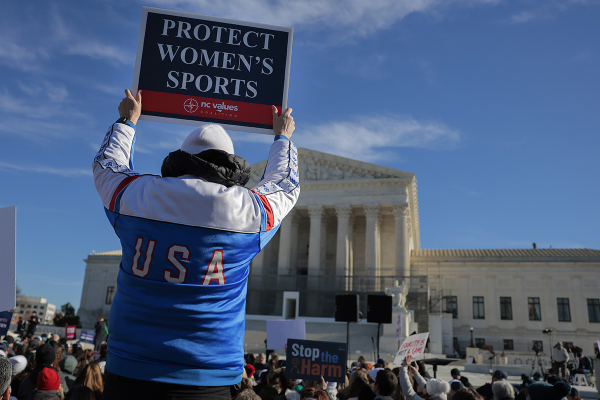Rwandan genocide victim learns to forgive, befriends man who cut off her hand

NYAMATA, Rwanda — She had her hand chopped off, her head bludgeoned and saw her 9-month-old daughter split in two, but 25 years later, 48-year-old Alice Mukarurinda and the man responsible for cutting off her limb, Emmanuel Ndayisaba, are now good friends.
The two have preached the need for forgiveness and reconciliation that has encompassed the central African nation in the last quarter-century since one of the worst human rights atrocities in world history took place — the genocide against the Tutsis.
In April 1994, Alice and her husband were among the hundreds of thousands of Tutsis left to die after being beaten, hacked, speared, burned, smashed or shot to death by mobs of angry citizens and security forces driven by an extremist ideology pushed by officials in Rwanda’s Hutu-led government.
The goal was to “exterminate” their social class. Many were killed by their neighbors and friends they thought they could trust.
Although they were brothers and sisters in Christ, toxic propaganda incited the majority Hutus to try to completely drive the minority Tutsis (portrayed socially as tall, wealthy cattle herders favored by Belgian colonists) into extinction.
As the strong majority of the Rwandan population is uneducated, the ideology spread through propaganda radio broadcasts and newspapers. It corrupted the minds of many Hutus, including church leaders. Others were coerced into participating out of fear of their own lives.
In the span of three months beginning in April 1994, it is estimated that as many as 1 million were killed in the 90 percent Christian country, with many of them massacred inside churches.
Most were Tutsis and others were moderate Hutus who refused to participate in the extermination of Tutsi "cockroaches" that the government at the time considered to be fake Rwandans.
Fortunately for Alice and her husband, they survived despite the physical harm they suffered. However, their baby daughter, her mother, her siblings and many of their neighbors were not as fortunate.
'Every day that month, they were killing, killing and killing'
In April 1994, Hutus in the rural Eastern Province attacked Tutsis in Alice's village. Married just over a year-and-a-half before that, Alice, her husband and her infant daughter sought to hide in a church in Nyamata, while her mother and siblings were hiding in another church that was ultimately burned down with them inside.
The church that Alice, her husband and daughter were hiding in was later torched to the ground but they were somehow able to escape to safety.
“Every day in that month, they were killing, killing, killing,” Alice said through a translator while speaking with reporters on a press trip to the country with the evangelical human rights NGO World Vision U.S., which has provided relief and development efforts throughout most of the country since 1994.
“[Many people] were coming with different weapons and they were just killing. By that time, there were many people who were involved in the killing — the soldiers and even the airplanes were around us checking where we are so that they could kill us all. We thought that is the end for us and that we would no longer survive.”
Alice tried to seek refuge and tried to hide in the water. At the time, Alice’s family and other local Tutsis couldn’t eat or sleep because they were constantly on the move trying to hide. Many died from hunger and horrible conditions.
On April 29 of that year, Alice’s family finally met their fate.

“There were so many people that came with weapons given to them by the French government and they all came. There were machetes, there were axes, arrows … and bullets,” she said.
Alice was struck in the head with some kind of blunt force weapon that had a nail sticking out and she was speared in the shoulder. She also lost her hand in the process thanks to a chop from Emmanuel. Meanwhile, a group of men cut her child in two. Her husband was also attacked but he had less serious injuries.
“It has been much worse. It’s been a long time and that is why it doesn’t look as bad,” she explained as she showed the journalists her scars. “At that point [you are in another state of mind] so you don’t know who is doing what.”
The perpetrators believed that Alice was dead and dumped her unconscious body along with the mangled remains of deceased victims. Many of the bodies were ravaged by hungry dogs.
For the few people that remained alive in the pile of death, the Rwandan Patriotic Front (the rebel group that ultimately took power and ended the genocide in July 4, 1994, when it overtook the capital of Kigali) rescued them and took them to receive medical help.
“They didn’t know some people were still alive, so [I] was taken sometime after others were taken,” Alice explained. “They couldn’t tell who was alive or dead. Their bodies were filled with [maggots].”
Although Alice was born into a family with 11 siblings, just her and another sibling survived but are left with disabilities from the genocide.
She said that all the doctors had been killed so it was hard to get treated but they did the best they could. Alice had no mobility or movement on half of her body because of the damage. It took her two months to learn how to move again and for her brain to function the way it used to.
She was taken to an IDP camp where she was reunited with her husband.
Follow Samuel Smith on Twitter: @IamSamSmith
or Facebook: SamuelSmithCP





















